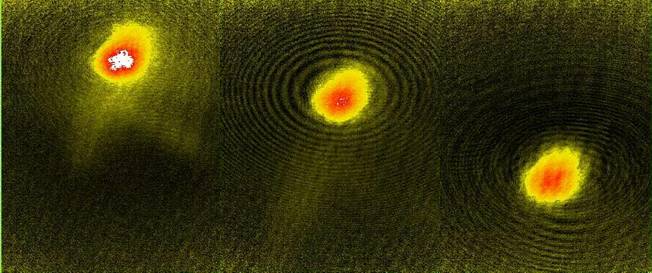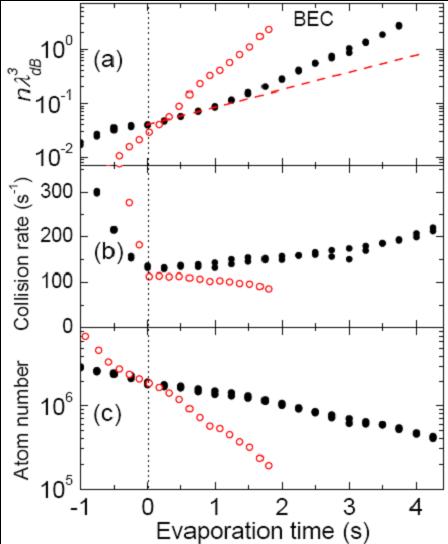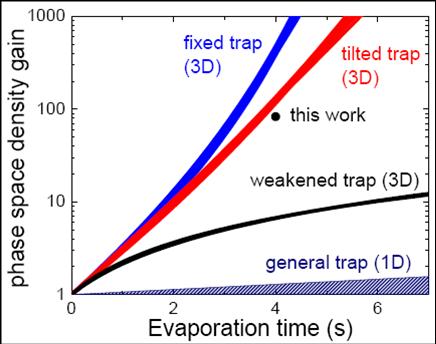Nov/7 - Runaway Evaporation to Cs BEC
Accelerating evaporative cooling of atoms into Bose-Einstein condensation in optical traps
C.-L. Hung, X. Zhang, N. Gemelke and C. Chin
Physical Review A 78, 011604(R) (2008)
 |
| The time-of-flight (TOF) absorption images above are taken at various stages in our evaporative cooling path. The TOF expansion time is 70 ms. During the first 64 ms, atoms are levitated with an external field gradient of 31.5 G/cm, followed by a 6 ms free fall. In the first two pictures, atoms are still thermal with a Gaussian momentum distribution. In the later pictures, bimodality is seen, showing the phase transition into a Bose-Einstein condensate. |
Performance of our new trap-tilting based forced evaporation:
Dipole trapping
 |
Our dipole trap is formed by intersecting two laser beams on the horizontal (x-y) plane; both beams are extracted from a single-mode, single frequency Yb fiber laser operating at the wavelength of 1064 nm, frequency offset by 80 MHz, focused to a beam diameter of 540 micron (620 micron) and intensity of 1.9 W (1.6 W) in the y-(x-) direction. |
Optical cooling: molasses and degenerate Raman sideband cooling
| Here are three snapshots of ultracold atoms, the yellowish blobs in the images, when they are released in free space. In free space, two things happen: atoms drop downward due to gravity and also expand due to their finite temperature. Here atoms are about 5 micro-Kelvin, after optical molasses cooling. |  |
| Using degenerate Raman-sideband cooling, we achieved a much lower temperature. In this figure, we show that the atoms hardly expand within the free fall time of 25 ms. The temperature of these atoms is 470nK. The fine fringes are due to imperfection of our imaging system, which we have fixed now. |  |


